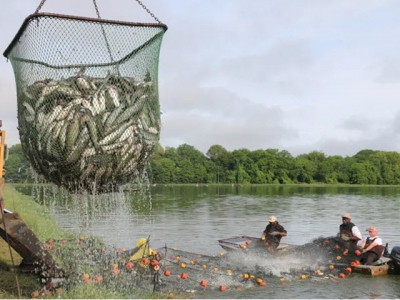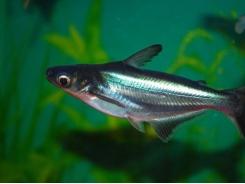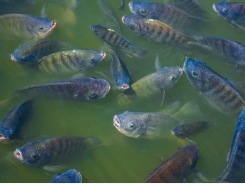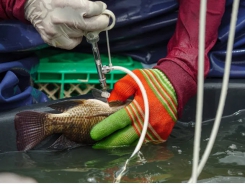Feed ingredients and feeds for channel catfish - Part 2

Vitamin and mineral supplements
Commercial catfish feeds are supplemented with a vitamin premix that provides all vitamins in quantities necessary to meet requirements and compensate for losses caused by feed processing. Phosphorus and trace mineral supplements are commonly added in catfish feeds to ensure that mineral requirements are met.
Supplementary amino acids
The essential amino acid requirements of fish are generally met with a diet that contains a mixture of feedstuffs with complimentary amino acid profiles. If the mixture is deficient in certain amino acids, synthetic amino acids are supplemented. Catfish can efficiently utilize supplemental amino acids. Lysine and sulfur-containing amino acids (methionine and cystine) are the most limiting essential amino acids for most fish. In catfish feed formulations using commonly available feedstuffs, lysine is typically the only amino acid that needs to be supplemented in the diet. Supplemental lysine can be used up to about 0.4 percent of the diet.
Feed Additives
Currently, no feed additives are used in catfish feeds except the phytase enzyme that is used by some feed mills. The enzyme breaks down the bound form of phosphorus (phytate) in the main feed ingredients, making it available to the fish. It can completely replace the inorganic phosphorus supplement if the main feed ingredients provide a minimum of 0.6 percent total phosphorus. Phytase must be applied post-extrusion because it cannot withstand the high temperature associated with the manufacture of extruded feeds.
Feed formulations
Catfish feeds are generally formulated using computer programs based on specifications for including all required nutrients and energy needs and for ensuring that the diet is highly palatable and digestible. Measures are also taken to ensure that the diet has high water stability and floatability and is manufactured at the least cost. To formulate leastcost feeds, the following information is needed:
Nutrient requirements of fish
Nutrient and energy concentrations of feed ingredients
Nutrient and energy digestibility and availability from feed ingredients
Price and availability of feed ingredients
Levels of antinutrients or undesirable compounds present in the ingredients
Nutritional and non-nutritional restrictions
In formulating least-cost catfish feeds, nutritional and non-nutritional specifications can be set to include an exact, a minimum, or a maximum amount of an ingredient or nutrient. There are several specifications that need to be considered (Tables 1 and 2), but if too many specifications are used, the program may not be capable of calculating a formula, or it will produce a formula that is not practical. To calculate a formula for catfish, it is necessary to set nutrient specifications only for protein, available lysine, and total and available phosphorus. In addition, vitamin and trace mineral premixes are added to ensure that the requirements for these nutrients are met. Regardless of the specifications set, it is essential that the formula be doublechecked to ensure that the ingredient composition is practical and that the nutritional requirements are satisfied.
Table 1. Nutrient Specifications for Least-Cost Formulation of a 28 Percent Protein Feed.

1 Minimum available lysine should be 5.1 percent of the dietary protein. 2 Minimum methionine and cystine should be 2.3 percent of the dietary protein. 3 Lutein and zeaxanthin.
Table 2. Ingredient Specifications for Least-Cost Formulation of a Fingerling or Food Fish Feed.

1 Yellow pigment levels can vary greatly among different sources, and dietary yellow pigments should be monitored if distillers dried grains with solubles are used. 2 Animal proteins used in catfish fingerling feeds include menhaden fish meal, poultry by-product meal, porcine meat and bone meal, and porcine meat and bone/blood meal blend. 3 Sprayed on the finished feed to reduce feed dust. 4 Can be used to completely replace mono- or dicalcium phosphate supplement. Total phosphorus should be maintained at 0.6 percent or above if phytase is used. 5 FTU = phytase unit.
Types of feeds
Several types of feeds are available for commercial catfish production. They vary in nutrient and ingredient compositions, forms, and pellet sizes, depending on fish ages, sizes, and stages of culture. Fry and fingerling feeds contain higher protein than food fish feeds because small fish have a higher protein requirement than large fish.
Fry feeds
In the hatchery, catfish fry (once the yolk sac is absorbed) are typically fed a trout or salmon starter diet containing about 50 percent protein supplied mainly by marine fish meal. Once stocked into the nursery ponds, they are fed finely ground feed powder (Fig. 1) from catfish fingerling or food fish diets. During this early stage of life catfish fry depend mainly on natural foods (large zooplankton, insect larvae, and small insects) for normal growth and survival. Fry feeds are used as supplements until they reach a size of 3 to 5 cm.
Fingerling feeds
Small fingerlings are fed small floating pellets (3 mm in diameter) containing 32 to 36 percent protein (Fig. 1). A typical fingerling feed contains soybean meal, cottonseed meal, animal proteins (such as porcine meat and bone meal, meat and bone/blood meal blend, or poultry by-product meal), corn, wheat middlings, animal fat/fish oil, and vitamin and mineral supplements.
Food fish feeds
Channel catfish grown from advanced fingerlings to market size are typically fed a 28 or 32 percent protein floating diet approximately 5 mm in diameter (Fig. 1). Evidence shows that a properly balanced 28 percent protein diet can provide the same level of growth as a 32 percent protein diet with little impact on processed yield and body nutrient composition. Because of the high cost of animal proteins, food fish diets are made up of all plant feedstuffs. Traditional high-cost ingredients such as soybean meal and corn are being replaced partially by alternative ingredients such as cottonseed meal, corn gluten feed, corn germ meal, and DDGS.

Figure 1. Various types of catfish feeds. Top left, fry feed (powder); top right, fingerling feed (3 mm in diameter, floating); bottom left, food fish feed (5 mm, floating); bottom right, slow-sinking feed (4 mm).
Broodstock feeds
Channel catfish broodstock are usually fed a 32 percent protein food fish feed or 36 percent protein fingerling feed. Some producers prefer feeding a slow-sinking feed because brood fish may be hesitant to feed at the surface.
Table 3. Examples of Ingredient Compositions for Catfish Fingerling and Food Fish Feeds

1 Can also be used to feed fingerlings. 2 Crude protein. 3 Can be replaced by poultry by-product on an equal protein basis. 4 Can be replaced by corn germ meal on an equal protein basis. 5 Distillers dried grains with solubles. Yellow pigment levels should be closely monitored. 6 Meets requirements for all vitamin and trace minerals. 7 Catfish oil, menhaden oil, poultry fat, or a mixture of these oils or fats is used post-pelleting to control feed dust.
Overwintering feeds
During the winter, when water temperatures are above 50 °F (10 °C), catfish should be fed a slow-sinking feed containing 28 or 32 percent protein according to winter feeding schedules based on water temperatures (see SRAC Publication No. 181, Feeding Catfish in Commercial Ponds, for details). Slow-sinking feeds (by extrusion) are typically fed during the winter because it is thought that catfish may be reluctant to feed at the surface during cold weather.
Related news
Tools

Phối trộn thức ăn chăn nuôi

Pha dung dịch thủy canh

Định mức cho tôm ăn

Phối trộn phân bón NPK

Xác định tỷ lệ tôm sống

Chuyển đổi đơn vị phân bón

Xác định công suất sục khí

Chuyển đổi đơn vị tôm

Tính diện tích nhà kính

Tính thể tích ao




 Specialist lighting increases tilapia growth rates by 10…
Specialist lighting increases tilapia growth rates by 10…  Feed ingredients and feeds for channel catfish -…
Feed ingredients and feeds for channel catfish -…